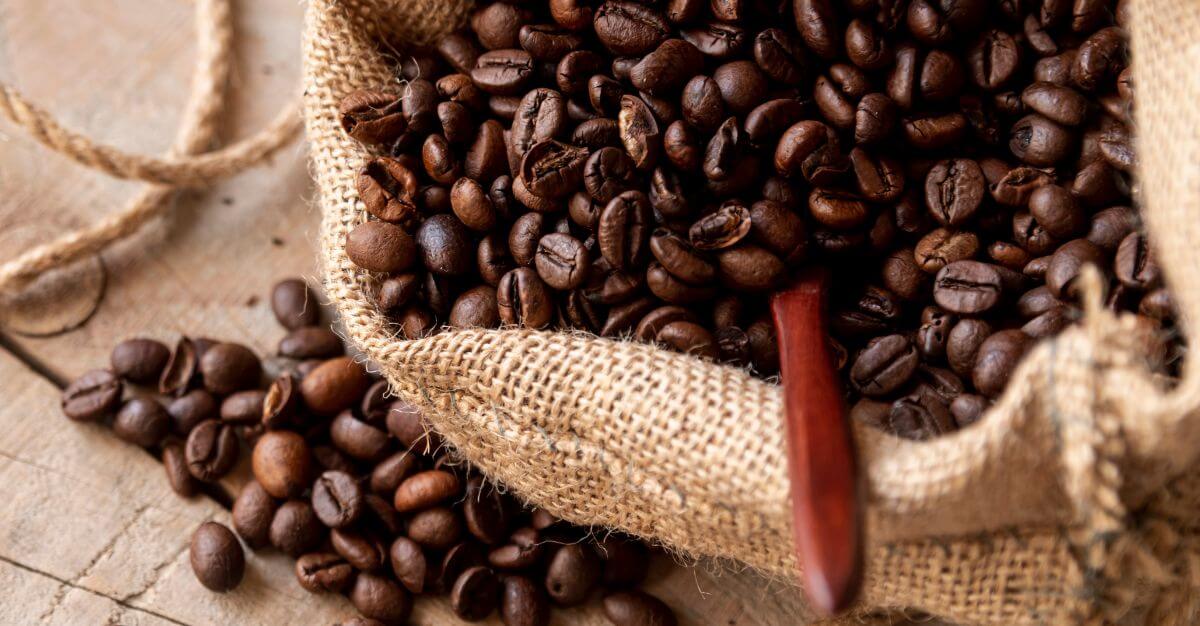1. Arabica
With roughly 60% of all coffee consumed worldwide coming from Arabica beans, they are the most common form of coffee beans. These delicious beans may have been the first coffee beans ever drunk as they were believed to have originated in the highlands of Ethiopia many millennia ago. The popularity of the beans in 7th-century Arabia is perhaps where the name Arabica originates (present-day Yemen). Arabica beans cost more as a result of being a little more challenging to grow. Arabica beans require more shade, water, and elevation for healthy growth. Arabica coffee beans lack bitterness and offer a pleasant, rich flavour.
2. Robusta
Robusta coffee beans are farmed mainly in Africa and Indonesia but were initially planted in sub-Saharan Africa. It is particularly well-liked in Vietnam and frequently included in coffee mixes. Since it is less expensive, roasters can choose this type without breaking the bank. Compared to other bean kinds, robusta beans are more significant and rounder. The Robusta coffee beans are often considered harder since they can grow at lower elevations and resist illnesses. These plants typically grow considerably more prominent than Arabica plants. Robusta coffee has a powerful aroma and a flat, almost burnt flavour. Additionally, Robusta beans have a lot more caffeine than Arabica beans.
3. Liberica
Liberica coffee beans are unique because they can only be cultivated in specific environments. Farmers cannot scale their operations to adequately supply a global market since there is not enough available produce. The Liberica coffee beans tolerate hot, muggy weather and grow well at low elevations. The bean now accounts for around 2% of the world’s coffee production and is primarily grown in Indonesia, Malaysia, and the Philippines. Liberica beans account for more than 95% of Malaysia’s coffee production. Many people who sampled the coffee compare its aroma to that of fruit and flowers and say it has a little “woody” flavour. Most Liberica cherries have an irregular form and resemble Robusta cherries more in size and overall look.
4. Excelsa
Excelsa beans have elongated oval-shaped bodies and are nearly exclusively grown in Southeast Asia. They resemble Liberica beans in shape and are technically part of the Liberica family of coffee beans. At moderate altitudes, these beans are grown on concrete 20–30 foot coffee plants. Excelsa beans are pretty distinctive in taste as the beans blend flavours reminiscent of dark roasts with characteristics of light roasts, like acidic notes and fruity flavours. The Excelsa coffee beans nonetheless have an unusual depth of flavour while being lower in fragrance and caffeine. These strange beans occasionally appear in mixes because they provide complexity.
How To Choose Coffee Beans

There are certain ways that will be able to help you choose the suitable coffee beans based on your taste and preference.
Coffee Roast
The distinct roasting techniques that give light and dark roasts distinctive flavour explosions account for the substantial differences between coffee beans. Choose dry, lighter-coloured coffee beans if you prefer coffee with a smoother flavour. These beans have a less bitter flavour profile because they have been roasted for a shorter time. Likewise, darker roasts are the way to go if you prefer a more potent, bitter beverage. There are four types of coffee roasts which are light, medium, medium-dark and dark roasts.
Caffeine Amount
Longer roasting causes a bean’s size and weight to change, simultaneously lowering the amount of caffeine in the bean. Darker coffee beans do not necessarily contain more caffeine, even though this is what most people tend to believe. If you prefer a more potent brew of coffee that is also lightly roasted, you can opt for the Robusta coffee beans. Arabica coffee beans are more suited for those who do not need a high caffeine amount.
Blended Or Single Origin
Single origin coffee beans originate from only one place, whether it is a single region or nation. The particular environment, minute details, and coffee plantation where the bean was cultivated can also be included as a single source. Due to their seasonality and smaller batch sizes, single-origin coffee beans are frequently lightly roasted to produce authentic and distinctive flavours.
Many coffee drinkers are also drawn to the flavorful undertones of blended coffee. Typically, a roaster may combine beans from two to four distinct origins to create a blend with a pleasing balance of flavour, smoothness, and scent. The resultant profile contains notes such as chocolate, citrus, hazelnut and other delicious flavours.
Depending on what you prefer in your coffee, you can choose to go for a single origin or blended coffee.
Summary
There are four primary coffee bean classifications: Arabica, Robusta, Liberica and Excelsa. These coffee beans have distinct specifications and tastes that satisfy every coffee drinker in Malaysia. As there are various coffee beans, choosing the right coffee bean that will suit your palate is essential; everyone deserves to have a great cup of coffee to start their day.





FOLLOW US